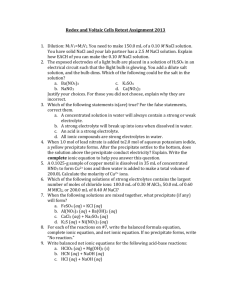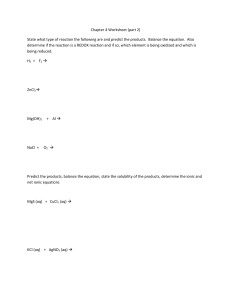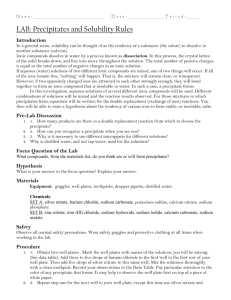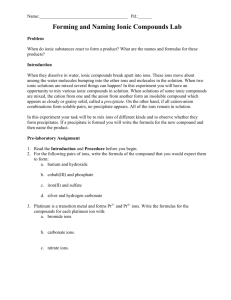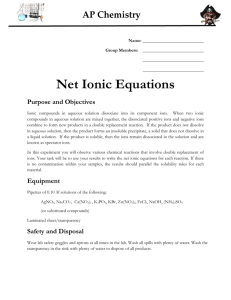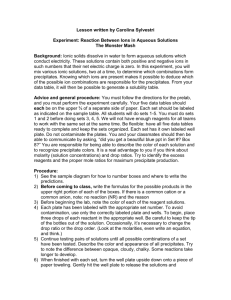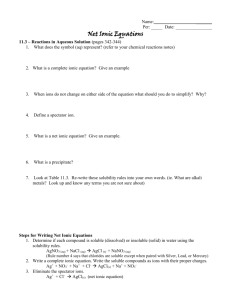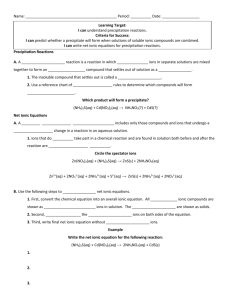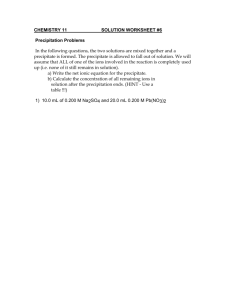Ionic Dropper Lab
advertisement
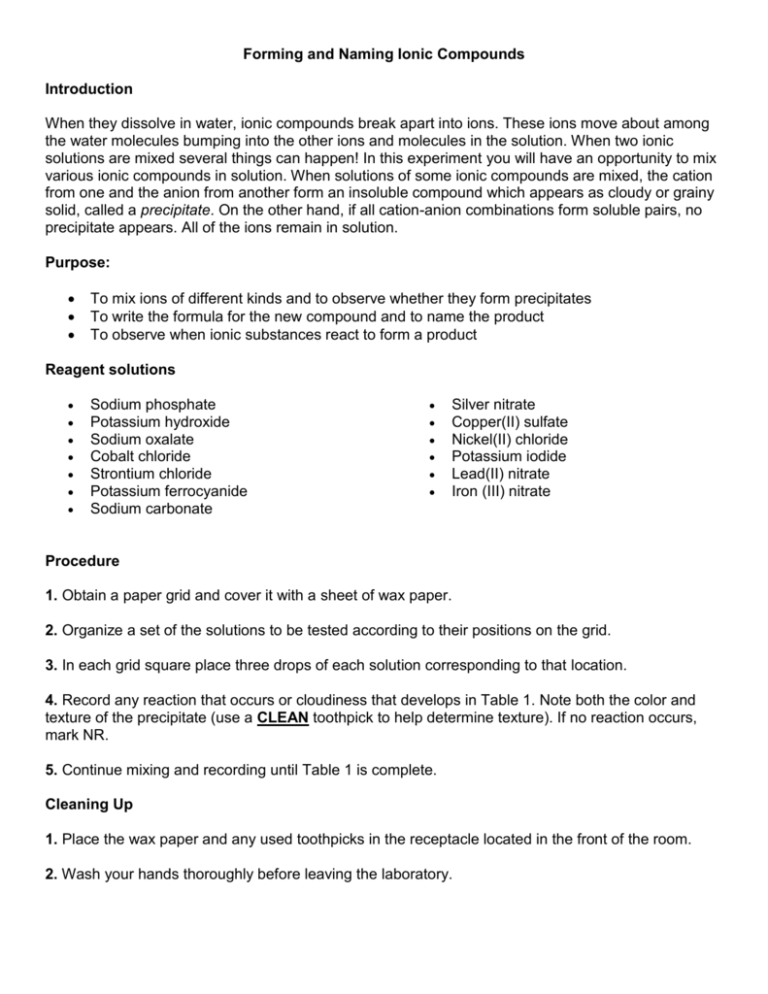
Forming and Naming Ionic Compounds Introduction When they dissolve in water, ionic compounds break apart into ions. These ions move about among the water molecules bumping into the other ions and molecules in the solution. When two ionic solutions are mixed several things can happen! In this experiment you will have an opportunity to mix various ionic compounds in solution. When solutions of some ionic compounds are mixed, the cation from one and the anion from another form an insoluble compound which appears as cloudy or grainy solid, called a precipitate. On the other hand, if all cation-anion combinations form soluble pairs, no precipitate appears. All of the ions remain in solution. Purpose: To mix ions of different kinds and to observe whether they form precipitates To write the formula for the new compound and to name the product To observe when ionic substances react to form a product Reagent solutions Sodium phosphate Potassium hydroxide Sodium oxalate Cobalt chloride Strontium chloride Potassium ferrocyanide Sodium carbonate Silver nitrate Copper(II) sulfate Nickel(II) chloride Potassium iodide Lead(II) nitrate Iron (III) nitrate Procedure 1. Obtain a paper grid and cover it with a sheet of wax paper. 2. Organize a set of the solutions to be tested according to their positions on the grid. 3. In each grid square place three drops of each solution corresponding to that location. 4. Record any reaction that occurs or cloudiness that develops in Table 1. Note both the color and texture of the precipitate (use a CLEAN toothpick to help determine texture). If no reaction occurs, mark NR. 5. Continue mixing and recording until Table 1 is complete. Cleaning Up 1. Place the wax paper and any used toothpicks in the receptacle located in the front of the room. 2. Wash your hands thoroughly before leaving the laboratory. Data Presentation Table 1. Observations of Color and Texture Na3PO4 PO43− KOH OH− K4Fe(CN)6 Fe(CN)64− Na2CO3 CO32− KI I− Na2 C2O4 C2O42− CoCl2 Co2+ Pb(NO3)2 Pb2+ CuSO4 Cu2+ Fe(NO3)3 Fe3+ NiCl2 Ni2+ SrCl2 Sr2+ AgNO3 Ag+ Data Analysis 1. If a reaction occurred, write the correct formula and chemical name for the substance formed. Na3PO4 PO43− CoCl2 Co2+ Pb(NO3)2 Pb2+ CuSO4 Cu2+ Fe(NO3)3 Fe3+ NiCl2 Ni2+ SrCl2 Sr2+ AgNO3 Ag+ KOH OH− K4Fe(CN)6 Fe(CN)64− Na2CO3 CO32− KI I− Na2 C2O4 C2O42−
